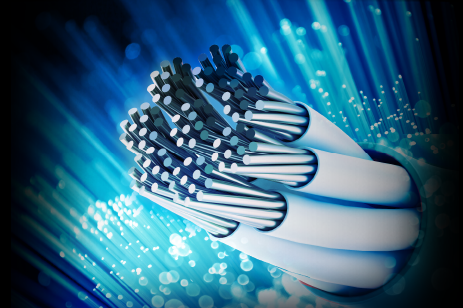
Clearing up the misconceptions about copper cabling & fiber optics
Both fiber optic and copper wiring technology have been used in a variety of military and aerospace applications for decades, with copper Ethernet typically recognized as the more practical option of the two. Having been the traditional model for Ethernet cabling, twisted-pair copper wiring has been more widely deployed; the overwhelming majority of network technologies are electrical and use copper cabling to move electrons throughout systems comprised of sensors, controls, and other computing electronics. This ubiquity has not only driven down the cost of copper-based Ethernet networks but also reduced the complexity of implementation.

Figure 1: Copper and fiber optic cables have both been implemented in military and aerospace networks for years
In contrast, fiber optic cables are made from strands of optically pure glass that carry digital information via photons (i.e., light) instead of electrical currents. Upon introduction to the market, fiber quickly gained a favorable reputation for its lightning-quick speeds, lightweight cables, and native defenses from interference and eavesdropping – along with an unfortunate reputation for its high price tag.
But as fiber technology has expanded its share in both consumer and enterprise markets, its price delta with copper has decreased. And, as copper cabling has matured, new security protocols and enhancements have strengthened its competitive value against its fiber optic counterpart. Still, there are many preconceived notions about both interface types when it comes to their strengths and weaknesses for military and aerospace applications.
Download the white paper to read about which of these beliefs have been rendered inaccurate as both copper and fiber technologies have evolved.
Read About:
- Bandwidth (10GigE) and security (MACsec) enhancements in copper cabling
- Signal integrity, EMI and reliability
- Supporting hybrid networks that mix fiber and copper